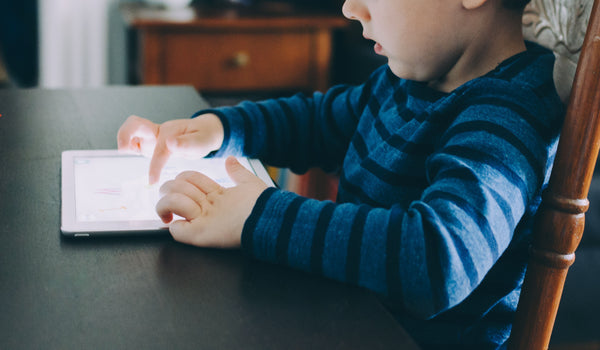Signs Your Child Is Emotionally Dysregulated And How To Support Them

Sometimes it can be difficult to figure out when a child is feeling emotionally dysregulated, and it can be even more difficult knowing how to support them into equilibrium. Maybe they are melting down in the grocery store, are more quiet than usual, or are bringing up old, painful memories that have nothing to do with the present moment you are in.
What is emotional dysregulation?
Emotional dysregulation is when a child can’t control their emotions, their response seems over-reactive, and they are struggling to find balance in how they are feeling. Emotional dysregulation is very common in the toddler-preschooler range because they literally aren’t capable of controlling their emotions. As they push the end of that age range they can usually recognize why they might be struggling, but it’s still a long road of brain development.
Signs Your Child Is Emotionally Dysregulated:
- Seemingly excessive crying
- Crying over things that are out of character
- Excessive whining
- Aggression (yelling, hitting, throwing things)
- Irritability
- Mood swings
- Anxiety and worry
- Impulsive behaviors
How To Support A Child While They Learn To Self-Regulate
- Holding space for and identifying emotions. We can’t force self-regulation and we can’t force brain development. The first step with teaching a child, especially a small child, to self-regulate is by holding space for their emotions. When a child isn’t allowed to be upset, even if it’s for something that we, the parents, might deem unacceptable, like crying over not getting a toy at the store, we still need to allow space for their feelings. We don’t have to give in and get them the toy, but we don’t have to get upset about it either.
A child who is expected to stuff their emotions down and not have meltdowns or tantrums is a child who will most likely experience outbursts, whether emotionally or physically, later on. It might be later on that day, that week, that month. When we hold space for an emotion, (“I hear you. You are so sad about x.”) we are teaching them to identify how they are feeling.
Being able to identify how they are feeling is critical to being able to regulate their emotions. You can’t regulate something that you don’t understand or know about. There are many resources out there to help with emotion identification like this “How you feeling?” poster.
-
Identifying triggers and offering solutions. If there is something specific that always seems to knock your kid off balance, take note of that. Instead of waiting for the next time the meltdown happens, brainstorm some preventative measures, as well as coping strategies.
For example, if your child gets frustrated with their school work, offer some solutions. Those could be doing less school work, identifying what the specific issue is to see if it can be taught in a different way, allowing them to walk away and play or get a snack or drink when they are feeling frustrated, or sitting with them to provide moral support while they work through the problem.
Or maybe their trigger is leaving the playground. It’s hard to transition into new activities, especially when the current one is so fun. You can slowly introduce different strategies that will help them work through this transition.
First of all, tell them the plans for the day. Then offer a countdown when it’s getting close to time to go. Have a ritual activity that you do every time you leave (“Bye, slide! Bye, grass! Bye, swings!”). Tell them something exciting that they are going to do once they leave. It’s very easy to make cooking dinner sound fun and playful if they get to be included.
I believe that the single most important thing you can do to nurture a child’s ability to emotionally regulate is to model it. Model feelings by labeling theirs as well as yours. Model how to respond when things are frustrating. Do you yell or throw things? Do you take a deep breath? Do you say that you need to step away for a moment because you are feeling overwhelmed? This doesn’t mean that we have to be perfectly composed, but with a little mindfulness in how we respond to situations, we are teaching them how to respond to different situations. And when we inevitably do mess up, we can also model how to make amends.
Written By: Sam Milam is a freelance writer, mother of two, and an attachment parenting coach of the past 7 years. Her focus is always on emotional intelligence, acknowledging the expectations of the parent, and nurturing the inner child of both parent and child. You can find her over at her website, The Parent Collaboratory.
Also in Blogs

Does Your Child Live in a High-Conflict Environment?

“What's On?” The Impact Of Media On Kid's Emotional Well-being

